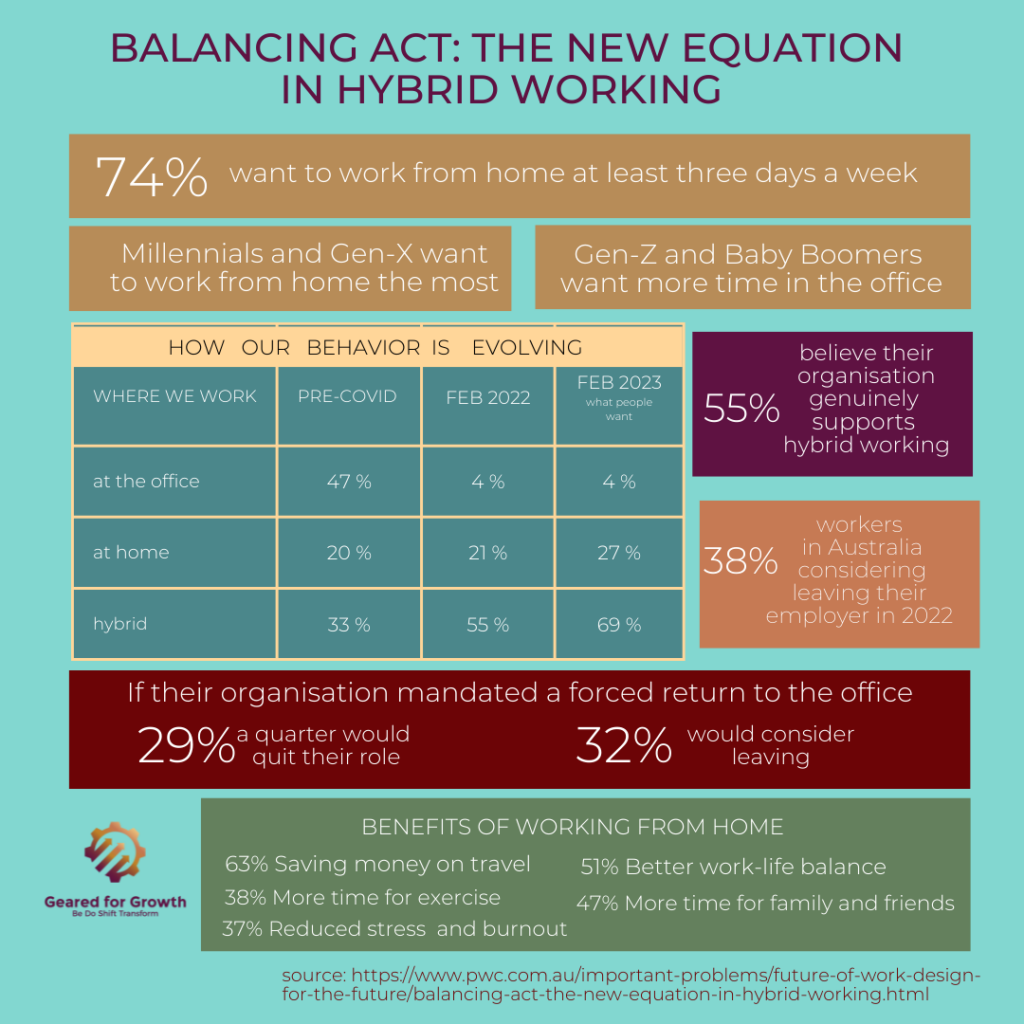The Covid-19 pandemic led to many benefits for workers, one of which is the work-from-home arrangement. As much as it has proven to be cost and time efficient, working remotely has also led to feelings of isolation and burnout for some people as well as issues of visibility for employers. Regardless, the study conducted by PwC Australia found that 74% of employees want to work from home and report to the office for two days only. Organisations then need to strike the right equation for Hybrid working.
The Newer Normal
While the work-from-home experiment became the new normal, Hybrid working is now the newer normal. Employers need to take a new understanding of how employees work in this new set-up to bring out the best in their people, organisations, and workplaces.
The study conducted by PWC in February 2022 included 1,040 employees from around Australia of businesses with a minimum of 20 employees. The report elicited insights into how leaders in organisations can implement an approach to hybrid working that supports the needs and expectations of Australian workers.
Back in 2016, only 5% of workers worked from home but today, 96% of knowledge-based workers are either working remotely or hybrid. It’s interesting to find that Millennials and Gen-X’s want to work from home the most while Gen-Z and Baby Boomers want more time in the office. Understandably, providing flexibility is the solution, and this requires establishing improved norms and practices to make the most of hybrid working.
Meeting employee expectations
Although many organisations support the hybrid work model, only half of the workers surveyed believed that their company truly supports hybrid working. More than a third of the employees would consider leaving their work due to an absence of a clear approach to flexible work and hybrid working. Employers need to listen to the needs of the workers and communicate their expectations in return.
The work-from-home set-up has resulted in a lot of incidental benefits which is why employers cannot just simply ask people to return to the office. A majority of workers have saved on travel costs and a reduced amount of stress from commuting, allowing for more time for family and friends, and exercise. All these changes have greatly increased their work-life balance. However, some disadvantages of remote working also need to be addressed such as having difficulty communicating with colleagues, more distractions, and for some, an insufficient work from-home setup.
The Paradigm Shift
While it is important to allow employees to work from home, leaders need to change the perspectives of their teams and their own perspectives about what it means to go back to the office. This paradigm shift boils down to the opportunity to co-locate with team members, come together for important social matters, and have better access to equipment and technology that is unavailable at home.
The role of the office has changed. The need for flexibility has made the office an important place for connection, collaboration, brand identity, and employee/customer experience. The pandemic has also demanded workspaces be hygienic and well-ventilated. As such, offices now need to have less formal work spaces, more collaboration zones, more social spaces, accessible technology, and of course, safety.

